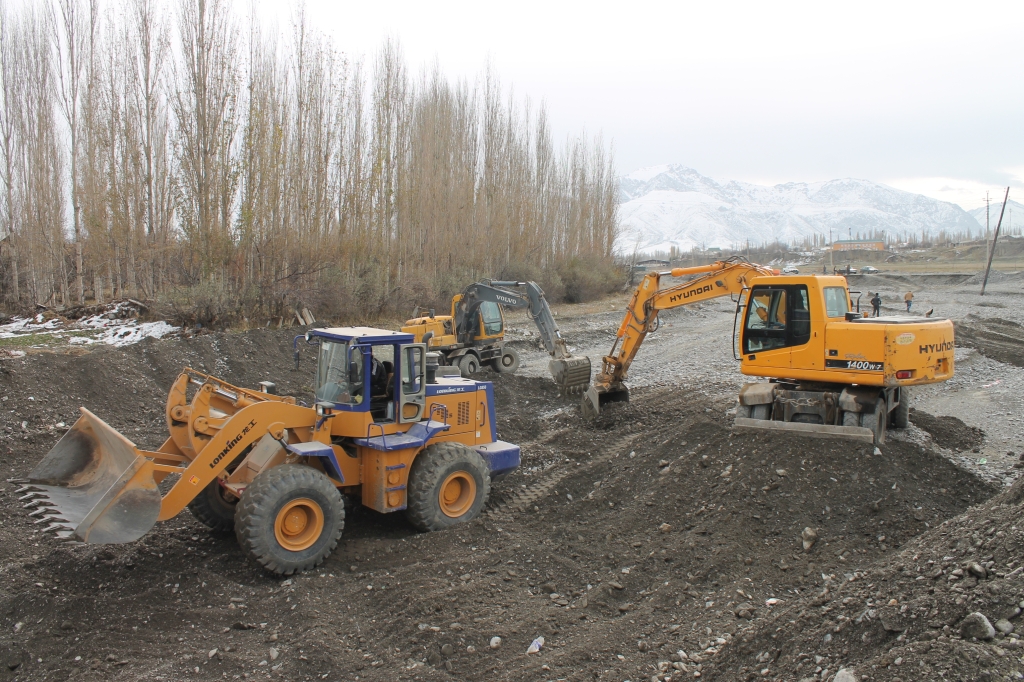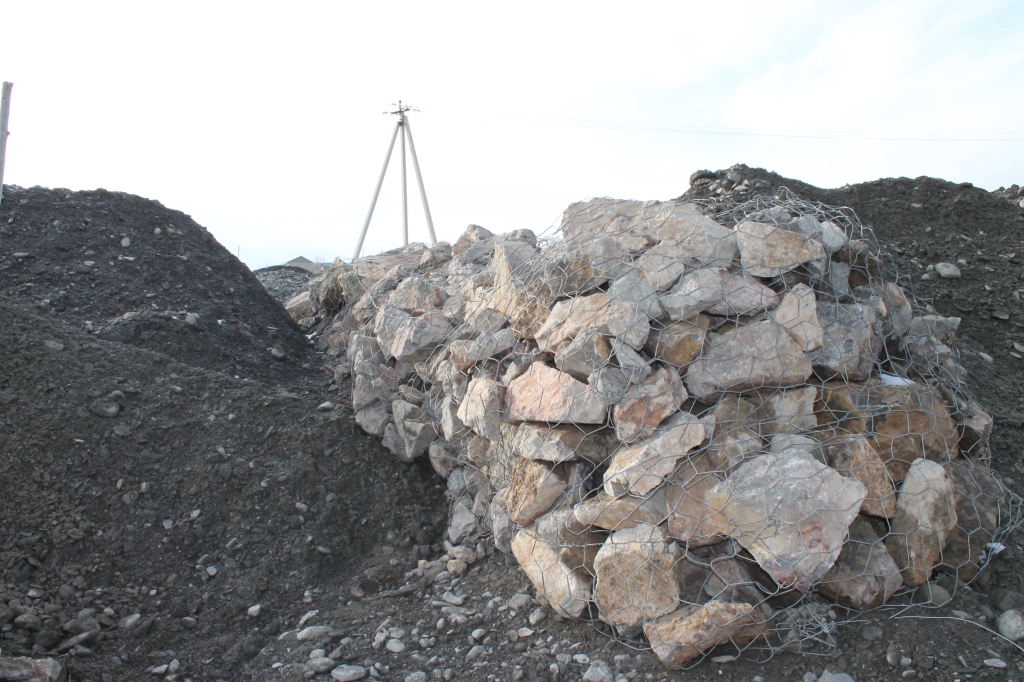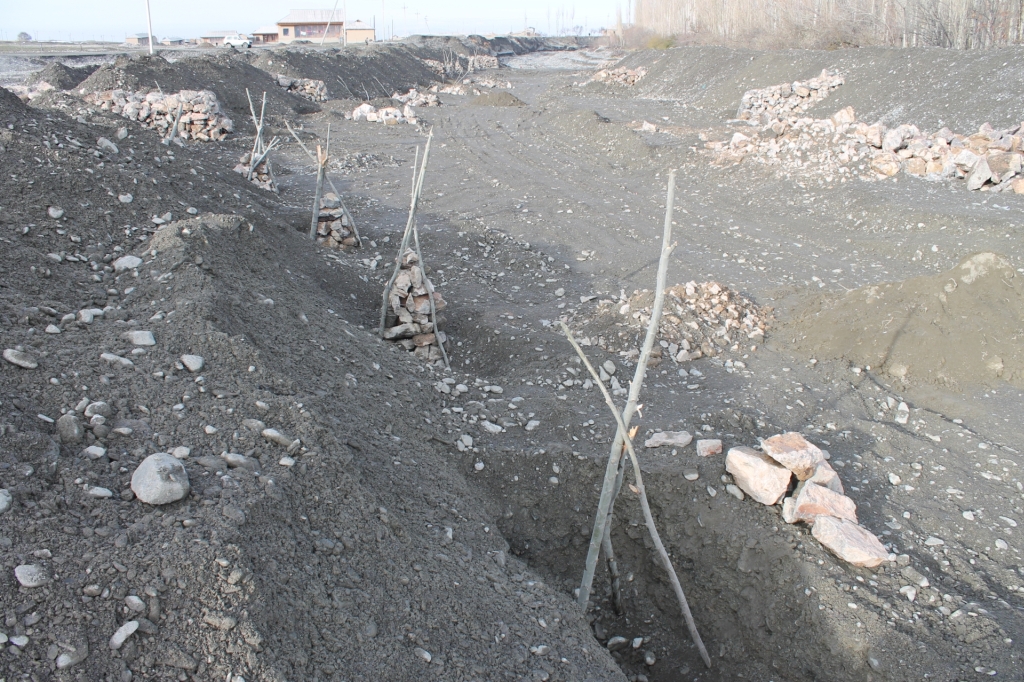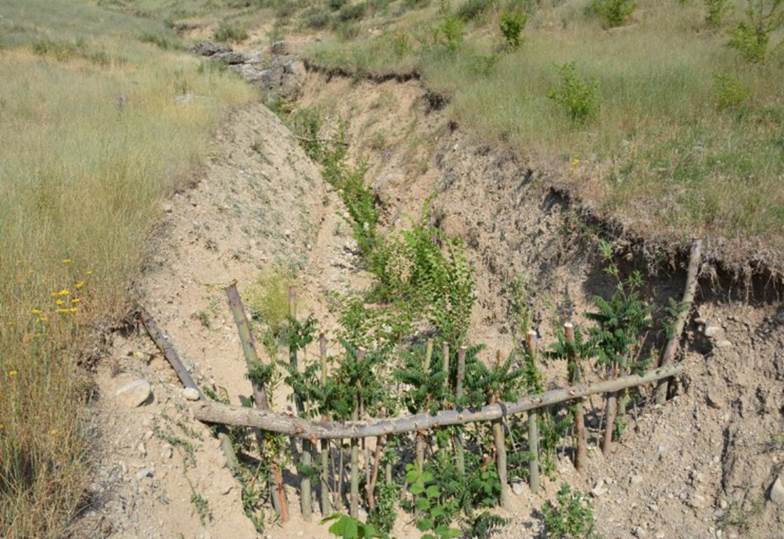




Disaster risk management can consist of protective constructions made from stone, concrete and iron ("grey") and the use of protective vegetation ("green"). The combination of both has several advantages. Green measures may need several years before they become effective. At the same time grey measures may lose stability over time, e.g. if gabion wires are corroded or walls are washed out by flowing water. Well maintained trees, however, can serve potentially forever.
The solution inlcuded the combination of green and grey measures in various forms. Riverbeds were reshaped and gabions installed for immediate protection. Trees were planted, in particular in form of tripods from willow branches, reinforced with stones. They will provide long-term protection.
In an upper catchment above a debris flow affected site gullies were blocked with branches and stones and trees planted to stabilize these and prevent further erosion. At the accumulation site, trees with drip irrigation and protected by a temporary fence make the land again usable and fertile and will provide some protection of lower located lands against future debris flows.
Enabling factors include the availability of engineering skills and experience provided by GIZ and related provision of machinery and materials. These were combined with the readiness of local people to contribute work and locally available materials.
The combination of grey and green measures can increase the cost-effectiveness of disaster risk reduction measures. The use of naturally occuring tree species stabilizes of reestablishes natural vegetation and makes use of the ecosystem services.
Green measures can be affected by free-ranging and poorly herded livestock. Temporary fencing, individual protection of trees and good involvement of the local community are therefore essential for the success.